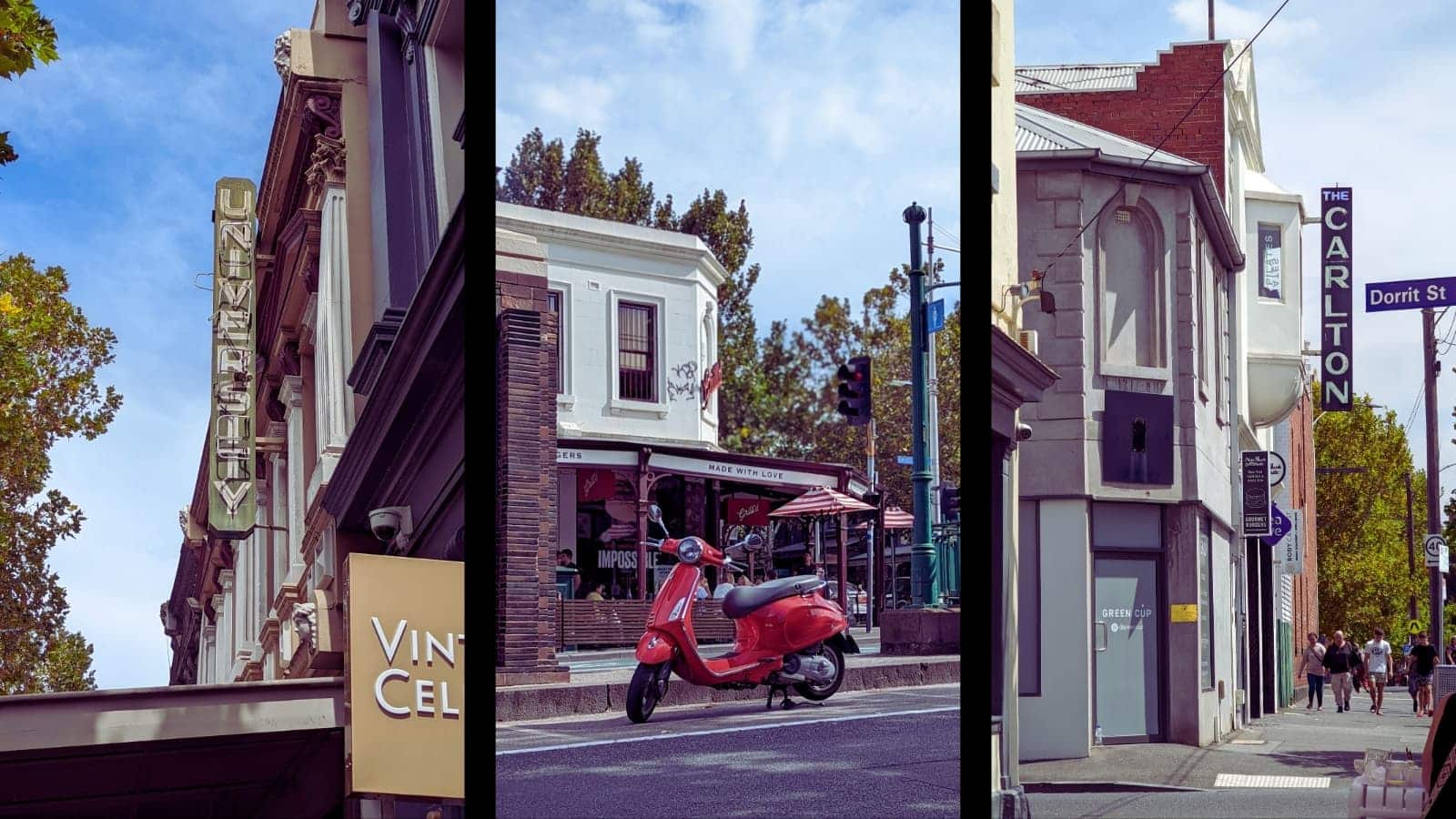Little Italy: Where Melbourne's Soul Meets La Dolce Vita
Picture this: the morning sun casting golden shadows across cobblestone memories, the intoxicating aroma of freshly ground espresso beans mingling with the sweet scent of cannoli from century-old pasticcerias, and the gentle hum of animated conversations in melodic Italian dialects. This is Little Italy – that magical stretch of Lygon Street, Carlton, where the spirit of the motherland has taken root in Melbourne’s cosmopolitan heart, creating something utterly extraordinary.
From Queensberry Street on the Hoddle Grid to Elgin Street in the north, this vibrant precinct pulses with an energy that’s uniquely Melbourne. Here, authentic Italian traditions don’t just survive – they flourish, weaving themselves into the fabric of one of the world’s most liveable cities. The result? A cultural symphony that resonates with pioneering spirit, passionate family values, and an uncompromising dedication to the art of living well.
Echoes of Ancient Custodians and Golden Dreams
Long before the first espresso machine graced these streets, this land belonged to the Wurundjeri Woi Wurrung tribe of the Kulin Nation, who understood the profound connection between place and community. Their legacy of gathering and sharing remains embedded in the very soul of what Little Italy Melbourne has become.
The mid-nineteenth century Gold Rush transformed this corner of Melbourne into a beacon for dreamers from across Europe. Imagine: hopeful immigrants, their pockets light but their hearts full of ambition, converging on this bustling quarter in pursuit of golden nuggets and new beginnings. Within three decades, an enterprising village of multicultural businesses had sprouted along these streets, each one a testament to the immigrant dream made manifest.
A Tale of Two Communities
Before World War II painted the world dark, Carlton told a different story. The neighbourhood thrived as a Jewish cultural hub, where Smorgon’s butcher shop (established 1927) filled the air with the scent of fresh cuts, Berenholz Leather and Sole (1930s & 1940s), worked their magic with shoe repair, and Kanatopsky’s grocery (1930s & 1940s) overflowed with the bounty of the old country. The Carlton synagogue (established 1914) stood as a spiritual anchor, while Cohen’s Kosher Restaurant (1930s & 1940s) and Altshuler’s Bookshop (1930s & 1940s) created gathering spaces where community flourished.
By the late 1940s, the cultural winds had shifted. The Jewish community gracefully relocated south of the Yarra, establishing new roots in St Kilda, Balaclava, and Caulfield, while Little Italy emerged as Melbourne’s Italian cultural heartland. It was a passing of the torch, one immigrant community making way for another, each leaving their indelible mark on the neighbourhood’s rich tapestry.
La Nuova Vita: The Great Italian Migration
The 1950s witnessed one of Australia’s most significant cultural transformations. As fascism’s shadow fell across Italy and economic hardship gripped the nation, Australia’s ‘Populate or Perish’ program opened its arms to over 170,000 Italian migrants within a single decade. Victoria became their promised land, with Carlton and Brunswick emerging as the beating heart of Italian-Australian life.
Carlton wasn’t chosen by accident – it was destiny. Existing Italian businesses had already planted the seeds of community, relatives provided the precious gift of sponsorship and shelter, and the neighbourhood’s proximity to Queen Victoria Market and local factories promised steady work for willing hands. As cafes, restaurants, delicatessens, wine bars, pasticcerias, and social clubs multiplied between Queensberry and Elgin Streets, Little Italy didn’t just establish itself – it revolutionised Melbourne’s social fabric, giving birth to the city’s legendary café culture.
Feast of Life: Little Italy Melbourne Today
Today, Little Italy stands as Melbourne’s most delicious testament to successful multiculturalism. Step into any of the traditional Italian restaurants, and you’ll find nonnas’ recipes preserved like precious heirlooms, passed down through generations of passionate cooks who understand that food is love made tangible. The aromatic cafes still serve espresso with the reverence of a sacred ritual, while quaint pasticcerias display their sweet treasures like edible jewels.
The gelaterias offer frozen poetry in every scoop – stracciatella that melts on your tongue like clouds of vanilla dreams, pistachio so rich it tastes like Sicily itself, and seasonal specials that capture the essence of Italian summers. Entertainment venues pulse with the rhythm of contemporary Italian culture, while boutiques showcase everything from handcrafted leather goods to the latest fashions from Milan’s runways.
But it’s the bars – ah, the bars! – where Little Italy truly comes alive. As the sun sets over Carlton, these intimate spaces transform into stages for life’s daily drama. Here, locals gather for their evening aperitivo, tourists discover the magic of Italian hospitality, and the boundaries between strangers dissolve over shared bottles of Chianti and plates of antipasti that could feed a small village.
Living the Sweet Life
Little Italy Melbourne isn’t just a destination – it’s a way of life. It’s the understanding that a meal shared is a memory made, that conversation is an art form, and that life’s greatest pleasures often come in the simplest packages: a perfect espresso, a sunset aperitivo, the laughter of friends echoing off heritage buildings that have witnessed decades of joy.
Walk these streets, and you’ll understand why Melbourne consistently ranks among the world’s most liveable cities. It’s not just the infrastructure or the weather – it’s places like Little Italy restaurants and cafes where the spirit of human connection thrives, where tradition and innovation dance together, and where every day offers the promise of discovering something delicious, something beautiful, something that makes life more magical.
Benvenuti a Little Italy – where every visit is a celebration, every meal a festival, and every moment a reminder that life, when lived well, is indeed dolce. Ciao, ciao!

